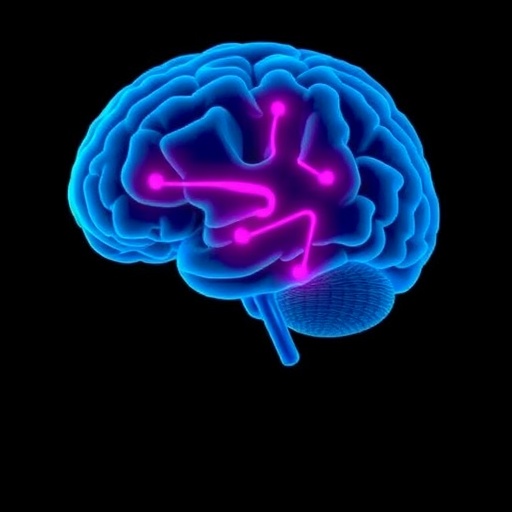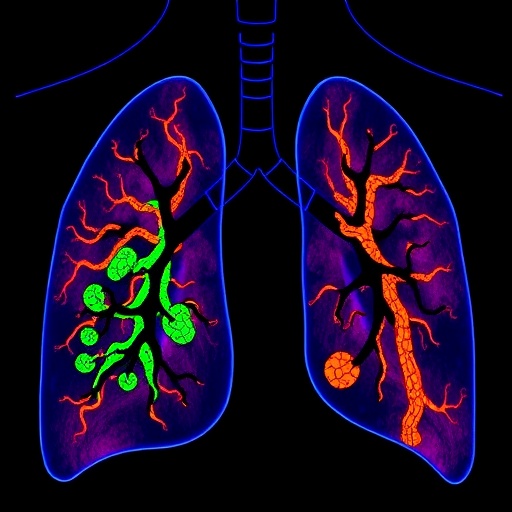In the rapidly advancing field of biomedical engineering, recent developments have spotlighted the electronic stethoscope as a device with transformative potential for clinical auscultation. This innovation bridges the gap between traditional acoustic instruments and cutting-edge digital technology, offering new dimensions in sound acquisition, processing, and diagnostic precision. The electronic stethoscope, recently addressed in a correction published in BioMedical Engineering OnLine, is reshaping how clinicians perceive and interpret physiological sounds, heralding a new era for cardiovascular and respiratory diagnostics.
Historically, stethoscopes have served as fundamental tools for physicians to auscultate heart, lung, and bowel sounds, relying heavily on the acoustic properties of chest pieces and tubing. However, the acoustic stethoscope’s limitations—such as susceptibility to environmental noise and subjective interpretation—have spurred research into electronic alternatives. The electronic stethoscope incorporates advanced sensors and amplification systems that not only enhance sound quality but also facilitate digital signal processing, enabling clinicians to visualize and analyze recordings with unprecedented clarity.
The correction in BioMedical Engineering OnLine exemplifies the meticulous nature of ongoing research in this domain by addressing critical updates and refinements in the understanding and functional description of the electronic stethoscope. This corrigendum arose from a team of researchers affiliated with premier institutions, including the National Heart Research Institute Singapore and Duke-NUS Graduate Medical School, exemplifying an interdisciplinary approach combining expertise in cardiovascular medicine, microelectronics, and biomedical systems engineering.
Central to the electronic stethoscope’s innovation is its ability to capture auscultatory signals with high fidelity and minimal interference. Utilizing sensitive piezoelectric sensors or microphones, the device converts acoustic vibrations into digital signals. These signals undergo sophisticated filtering and amplification algorithms that suppress ambient noise while preserving diagnostic nuances such as heart murmurs, bruits, and adventitious lung sounds. In addition, integration with artificial intelligence and machine learning algorithms allows for automated pattern recognition and anomaly detection, potentially providing real-time diagnostic support to clinicians.
Furthermore, the device’s capacity for wireless connectivity and data storage represents a leap forward in telemedicine and remote health monitoring. Digital auscultation recordings can be transmitted securely to specialists in disparate locations, enabling collaborative diagnostics and continuous patient monitoring. This functionality is especially valuable for rural or underserved populations, where access to expert clinical evaluation is limited. The electronic stethoscope’s data can also be integrated into electronic health records, contributing to longitudinal patient data analytics and more personalized care strategies.
The correction discussed in the article underscores the significance of precision in characterizing the device’s operational performance and clinical applications. It clarifies technical aspects related to sensor calibration, signal processing parameters, and ergonomics, ensuring the scientific community and medical practitioners have an accurate framework for both evaluating and deploying the technology. Such precision is vital to foster user trust and regulatory approval as the device transitions from experimental prototypes to widespread clinical use.
Complementing the hardware advancements are ongoing efforts to optimize the electronic stethoscope’s usability. Innovations include customizable acoustic profiles tailored to individual clinicians’ preferences and patient conditions, user-friendly interfaces, and ergonomic designs that maintain the traditional stethoscope’s familiarity while enhancing its capabilities. These improvements reduce the learning curve and encourage adoption in busy clinical settings where efficiency and accuracy are paramount.
Notably, the research collaboration highlighted in the correction brings together expertise in microelectronics from A*STAR, Singapore’s leading research agency, with clinical insights from healthcare institutes. This fusion of engineering rigor and clinical relevance exemplifies the multidisciplinary nature of biomedical innovation. Their contributions extend beyond hardware to include software development, signal analysis, and clinical validation studies, ensuring that the electronic stethoscope is robust, reliable, and clinically meaningful.
In addition to cardiac and pulmonary applications, emerging studies are exploring the utility of electronic stethoscopes in other clinical contexts, such as fetal monitoring, vascular assessment, and gastrointestinal diagnostics. Enhanced auscultation technology could detect subtle physiological changes that precede overt clinical symptoms, thereby facilitating early diagnosis and intervention. This evolving potential broadens the device’s impact in preventive medicine and patient management.
The correction serves as a beacon for the scientific community, emphasizing the necessity for accuracy and transparency in biomedical research publication. As electronic stethoscopes continue to evolve through iterative design and clinical feedback, maintaining precise documentation ensures that innovations are reproducible and effectively translated into improved patient outcomes. It recognizes the importance of peer scrutiny and ongoing refinement to advance healthcare technologies responsibly.
Looking forward, the integration of electronic stethoscopes with broader digital health ecosystems—including wearable sensors, mobile health applications, and cloud-based analytics—promises a comprehensive approach to patient monitoring. These interconnected platforms could revolutionize disease management by providing continuous, non-invasive auscultatory data streams, empowering both clinicians and patients with actionable health insights in real time.
In conclusion, the electronic stethoscope represents a compelling convergence of engineering ingenuity and clinical necessity. The recent correction published in BioMedical Engineering OnLine reinforces its significance and clarifies technical and practical considerations critical for its successful implementation. As the medical community embraces digital transformation, devices like the electronic stethoscope are poised to become indispensable tools that enhance diagnostic accuracy, expand access to care, and ultimately improve patient health outcomes across diverse settings.
Subject of Research: Electronic stethoscope technology and its application in clinical diagnostics.
Article Title: Correction: The electronic stethoscope
Article References: Leng, S., Tan, R.S., Chai, K.T.C. et al. Correction: The electronic stethoscope. BioMed Eng OnLine 24, 117 (2025). https://doi.org/10.1186/s12938-025-01457-7
Image Credits: AI Generated
Tags: biomedical engineering innovationscardiovascular diagnostics toolsclinical auscultation advancementsdigital sound processing in medicineelectronic stethoscope technologyenhancing diagnostic precision in healthcareovercoming acoustic limitations in stethoscopesresearch in medical instrumentationrespiratory sound analysissound visualization in medical diagnosticstraditional vs electronic stethoscopestransformative medical technology developments





